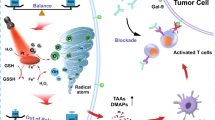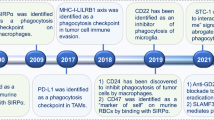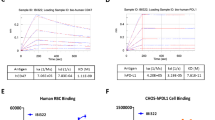Abstract
The therapeutic potential of epi-immunotherapeutic anticancer agent RRx-001 in cancer has been validated with preclinical and clinical studies, since RRx-001 has successfully completed a phase 1 trial and multiple single-agent and combination phase 2 trials with preliminary evidence of promising activity are underway. Previous experimental work has implicated diverse anticancer mechanisms such as oxidative stress, ATP and NADPH depletion, anti-angiogenesis and epigenetic modulation in the overall antitumor effect of RRx-001. The hypothesis of this study was that the RRx-001 red blood cells are the essential and de facto intermediaries responsible for the reprograming of tumor behavior via transfer of their intracellular and membrane contents. To test this hypothesis, and thereby resolve the “black box” incompleteness in the continuity of the mechanism, the fate of red blood cells incubated with RRx-001 was explored in vitro and in vivo both in healthy animals and in tumor-bearing mice. The collective results establish that RRx-001-derivatized red blood cells are the critical “missing links” to explain the specificity and anticancer activity of RRx-001, including its immunomodulatory effects on tumor-associated macrophages. These experimental results delineate a novel erythrocyte-based mechanism without precedent in the annals of oncology and open the door to rational combination strategies with RRx-001 both in cancer therapy and beyond, particularly in disease states that affect red blood cell and vascular function such as malaria, leishmaniasis, sickle-cell disease and hemorrhagic shock.









Similar content being viewed by others
References
Quatromoni JG, Eruslanov E. Tumor-associated macrophages: function, phenotype, and link to prognosis in human lung cancer. Am J Transl Res. 2012;4(4):376–89.
Hao N-B, Lü M-H, Fan Y-H, Cao Y-L, Zhang Z-R, Yang S-M. Macrophages in tumor microenvironments and the progression of tumors. Clin Dev Immunol. 2012;2012:948098. doi:10.1155/2012/948098.
Scicinski J, Oronsky B, Taylor M, Luo G, Musick T, Marini J, Adams CM, Fitch WL. Preclinical evaluation of the metabolism and disposition of RRx-001, a novel investigative anticancer agent. Drug Metab Dispos. 2012;40(9):1810–6.
Brouse C, Ortiz D, Su Y, Oronsky B, Scicinski J, Cabrales P. Impact of hemoglobin nitrite to nitric oxide reductase on blood transfusion for resuscitation from hemorrhagic shock. Asian J Transfus Sci. 2015;9(1):55–60.
Liao JK, Zulueta JJ, Yu FS, Peng HB, Cote CG, Hassoun PM. Regulation of bovine endothelial constitutive nitric oxide synthase by oxygen. J Clin Invest. 1995;96:2661–6.
Fens MH, Larkin SK, Oronsky B, Scicinski J, Morris CR, Kuypers FA. The capacity of red blood cells to reduce nitrite determines nitric oxide generation under hypoxic conditions. PLoS One. 2014;9(7):e101626.
Rengasamy A, Johns RA. Characterization of endothelium-derived relaxing factor/nitric oxide synthase from bovine cerebellum and mechanism of modulation by high and low oxygen tensions. J Pharmacol Exp Ther. 1991;259:310–6.
Oronsky BT, Reid T, Knox SJ, Scicinski JJ. The scarlet letter of alkylation: a mini review of selective alkylating agents. Transl Oncol. 2012;5(4):226–9.
Fens MH, Larkin SK, Morris CR, Fitch B, Scicinski J, Oronsky B, Kuypers FA. NO or no NO, increased reduction of nitrite to nitric oxide by modified red blood cells ASH abstract Dec 2011.
D’Agnillo F, Alayash AI. Interactions of hemoglobin with hydrogen peroxide alters thiol levels and course of endothelial cell death. Am J Physiol Heart Circ Physiol. 2000;279:1880–9.
Setty BNY, Betal SG. Microvascular endothelial cells express a phosphatidylserine receptor: a functionally active receptor for phosphatidylserine-positive erythrocytes. Blood. 2008;111(2):905–14.
Benesch RE, Benesch R, Yung S. Equations for the spectrophotometric analysis of hemoglobin mixtures. Anal Biochem. 1973;55:245–8.
De Jong K, Geldwerth D, Kuypers FA. Oxidative damage does not alter membrane phospholipid asymmetry in human erythrocytes. Biochemistry. 1997;36:6768–76.
Algire GH, Legallais FY. Recent developments in the transparent-chamber technique as adapted to the mouse. J Natl Cancer Inst. 1949;10:225–53.
Oronsky B, Carter CA, Mackie V, Scicinski J, Oronsky A, Oronsky N, Caroen S, Parker C, Lybeck M, Reid T. The war on cancer: a military perspective. Front Oncol. 2015;4:387.
Reid T, Dad S, Korn R, Oronsky B, Knox S, Scicinski J. Two case reports of resensitization to previous chemotherapy with the novel hypoxia-activated hypomethylating anticancer agent RRx-001 in metastatic colorectal cancer patients. Case Rep Oncol. 2014;7(1):79–85.
Ning S, Bednarski M, Oronsky B, Scicinski J, Saul G, Knox SJ. Dinitroazetidines are a novel class of anticancer agents and hypoxia-activated radiation sensitizers developed from highly energetic materials. Cancer Res. 2012;72(10):2600–8.
EpicentRx, Inc unpublished data.
Cabrales P, Oronsky B, Scicinski J. RRx-001 inhibits glucose erythrocyte and tumor glucose 6-phosphate dehydrogenase, abstract 1420: AACR annual meeting, 2014; 5–9 April 2014, San Diego, CA.
Oronsky BT, Oronsky N, Fanger GR, Parker CW, Caroen SZ, Lybeck M, Scicinski JJ. Follow the ATP: tumor energy production: a perspective. Anticancer Agents Med Chem. 2014;14(9):1187–98.
Scicinski J, Oronsky B, Ning S, Minchinton A, Knox S. RRx-001 modulates intratumor blood flow in SCCVII and U87 tumors, cancer research: 15, April 2012; volume 72, issue 8, supplement 1 (4371) Proceedings: AACR 103rd annual meeting, 2012; 31 March to 4 April, 2012; Chicago, IL.
Scicinski J, Oronsky B, Ning S, Minchinton A, Knox S. Antivascular activity of RRx-001 in SCCVII and U87 tumors, 15th International symposium on anti-angiogenic therapy, La Jolla, 31 Jan to 2 Feb, 2013.
Oronsky BT, Scicinski JJ, Reid T, Knox S. Beyond antiangiogenesis: vascular modulation as an anticancer therapy-a review. Trans Oncol. 2012;5:133.
Oronsky B, Oronsky N, Knox S, Fanger GR, Scicinski J. Episensitization: therapeutic tumor resensitization by epigenetic agents: a review and reassessment. Anticancer Agents Med Chem. 2014;14:1121.
Sindrilaru A, Peters T, Wieschalka S, et al. An unrestrained proinflammatory M1 macrophage population induced by iron impairs wound healing in humans and mice. J Clin Invest. 2011;121(3):985–97.
Kalinski P, Urban J, Narang R, Berk E, Wieckowski E, Muthuswamy R. Dendritic cell-based therapeutic cancer vaccines: what we have and what we need. Future Oncol. 2009;5(3):379–90.
Palucka K, Banchereau J. Cancer immunotherapy via dendritic cells. Nat Rev Cancer. 2012;12:265–77.
Yalcin O, Oronsky B, Carvalho LJM, Kuypers FA, Scicinski J, Cabrales P. From mets to malaria: RRx-001, a multi-faceted anticancer agent with activity in cerebral malaria. Malar J. 2015;14:218.
Acknowledgments
This work was supported by EpicentRx.
Author contributions
All authors contributed to all stages of work behind this manuscript: idea conception, design and execution of the studies, analysis, drafting, writing and editing of the manuscript.
Author information
Authors and Affiliations
Corresponding author
Ethics declarations
Conflict of interest
Authors J. S. and B. O. are employees of EpicentRx. The remaining authors declare no conflicts of interest.
Rights and permissions
About this article
Cite this article
Cabrales, P., Scicinski, J., Reid, T. et al. A look inside the mechanistic black box: Are red blood cells the critical effectors of RRx-001 cytotoxicity?. Med Oncol 33, 63 (2016). https://doi.org/10.1007/s12032-016-0775-3
Received:
Accepted:
Published:
DOI: https://doi.org/10.1007/s12032-016-0775-3




